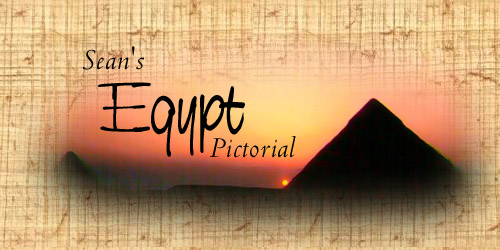It is almost inescapable to develop a conspiracy paranoia about
Egyptology. One of the revelations of The Orion Mystery was that a German scientist,
Rudolf Gatenbrink, sent a tiny robot up the southern shaft of the Queen's Chamber of the
Great Pyramid, and discover the presence of another chamber. ?!? Amazingly, this little
bit of information is not widely known and shortly after the discovery, Gatenbrink was
banned from the Giza plateau. Despite several proposals, he was denied permission to
send another robot capable of peering into the room via a fibre-optic camera.
Apparently, according to unofficial reports, the project was
completed be an Arabic team. I found this report on
Graham Hancock's page.
News flash from Giza as of December 1, 1996
What lies beyond the "door" at the upper end of the narrow passage leading up from
the "Queen's Chamber" in the Great Pyramid may have recently been explored, in
secrecy.
It has been reported to us that on October 20, 1996, the Gantenbrink experiment has now been
realized. As previously reported in the Egyptian Gazette newspaper, Zahi Hawass' choice of Dr.
Farouk El Baz to complete this project to explore the passage, apparently has come to fruition.
This story was obtained from two separate security guards at Giza, and independently confirmed via a
media person working with the Sphinx expedition of Dr. Joseph Schor, currently in the excavation
phase.This is the report:
At the end of the ascending passage, 8 inches square, leading from inside the Great Pyramid's "Queen's
Chamber" is a small "door" with two metal "handles." On October 20, 1996, Dr. El Bas and two
assistants sent a fiber optic camera lens through a flaw in this door. What was allegedly found was a 2
meter by 1.5 meter chamber inside of which was a statue. The statue seemed to be in the image of a
black male, holding an Ankh in one hand. On the opposing wall of this chamber was a round shaped
passage leading out.
Whether this report is legitimate has yet to be determined. The completion of this probe behind the door
has not been made public. Compare this report with any official reports, if and when they materialize.
I half tongue-in-cheek, half seriously, comment on how suspicious
it was that the Great Pyramid - the largest tourist draw to Giza, and probably the
biggest money maker - was closed for 8 months, for "cleaning".
There are so many things that bother me about Egyptology as
an established discipline. I think it's best if one reads some of the books that I've
described here. I haven't even scratched the surface. I guess the whole point of this
diatribe is that we still really know and understand next to nothing about Ancient Egypt.
This is true of the entirety of Egypt, not just the Great Pyramid which tends to be the
focus.
* There are two sets of names commonly used for the pharaohs to whom the
pyramids are attributed: Cheops / Khufu - the Great Pyramid; Chefren / Khafre - the second
largest of the three; and Mycerinus / Menkaure - the smallest. They are the Greek / Egyptian
names respectively - throughout these pages I will use Cheops, Chefren, and Menkaure. I don't
care about consistency - they're the names that I like, so there.
1 Stecchini, Livio in Tompkins, Peter. Secrets of the Great Pyramid.
New York: Harper & Row, 1971.
2 "Mummies and the Wonders of Ancient Egypt: Great Pyramids". A&E Television
Networks, 1996. AAE-15901.






